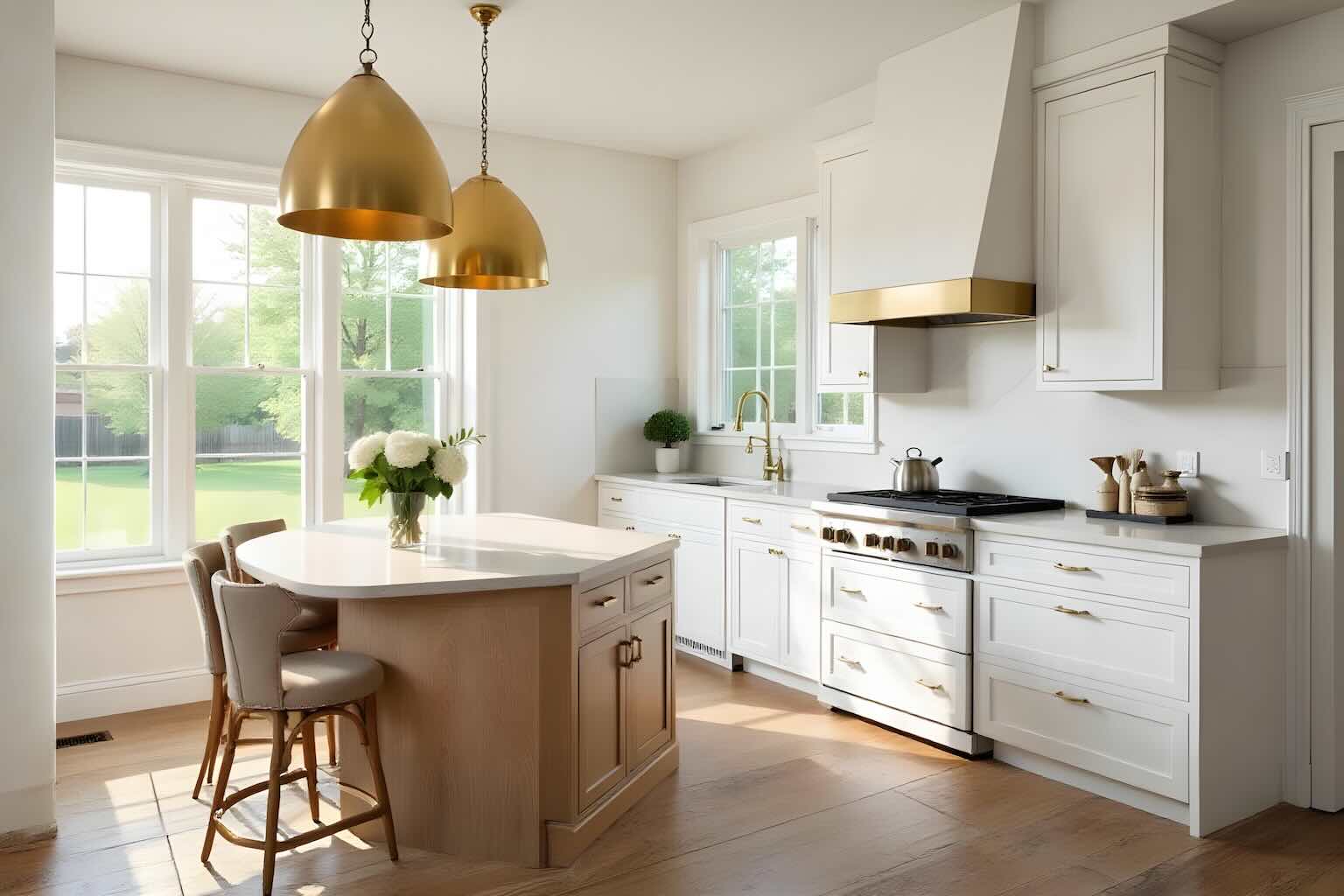The kitchen has always been called the heart of the home, and according to the latest National Kitchen and Bath Association (NKBA) 2026 trends report, that heart is getting bigger and smarter. Based on insights from more than 600 designers, builders, and manufacturers, the report highlights the styles, materials, and features that will define kitchens over the next three years. While some trends feel familiar, others reveal exciting shifts that reflect how our homes are evolving.
Transitional Style Still in the Lead
When it comes to design, transitional kitchens continue to dominate. This style blends the warmth of traditional design with the clean simplicity of modern spaces, creating a balanced look that appeals to many homeowners. In fact, 72% of professionals surveyed believe transitional will remain the top choice, followed by contemporary and minimalist designs at 60%. More specific aesthetics, such as farmhouse, cottage, or Mediterranean, are losing steam, signaling a move toward cleaner, more versatile kitchens.
Neutrals Reign, but Greens and Blues Are on the Rise
While bold colors often make headlines, the reality is that neutrals still rule in kitchen design. Whites, grays, browns, and blacks remain the most popular choices, with nearly all respondents predicting these shades will dominate. That said, greens and blues are steadily gaining attention. Industry experts believe these hues will become the go-to accents for backsplashes, islands, or even decorative details. Instead of overwhelming a space with bright tones, homeowners are expected to embrace color in subtle, refined ways.
White Oak Cabinets Still Shine
Cabinetry is also evolving, but one material continues to hold strong: white oak. Half of the professionals surveyed named it as the most sought-after option, and it’s easy to see why. White oak offers a timeless look that feels both modern and warm. However, darker woods like walnut are starting to climb in popularity, adding richness and depth to kitchens. Flat-panel European-style doors are leading the way in cabinet design, while Shaker styles remain a close second. Combined with floor-to-ceiling storage and panel-ready appliances, the trend points toward sleeker, more seamless kitchen spaces.
Quartz Countertops Lead the Way
Countertops are another area where practicality meets beauty. Quartz remains the number one choice, thanks to its durability and low-maintenance appeal, while quartzite follows closely behind. Granite, once a staple in high-end kitchens, continues to fall in popularity, and marble lags behind due to its delicate upkeep. Homeowners are leaning toward lighter countertops paired with darker cabinets, as well as matte or honed finishes over glossy ones. Waterfall edges are still in demand, though opinions differ on whether islands should match or contrast the main counters.
Backsplashes Get Sleeker
Just like countertops, backsplashes are shifting toward clean and simple designs. Ceramic and porcelain tiles remain the most common choice, but quartz and quartzite backsplashes are quickly becoming more mainstream. In particular, solid surface backsplashes that extend seamlessly from countertops are on the rise. These create a polished, cohesive look that reflects the broader movement toward streamlined kitchens.
Flooring Embraces Warm, Wide Planks
The NKBA report also predicts that flooring will mirror the same desire for low maintenance and natural warmth. Engineered wood is expected to outpace traditional hardwood, offering greater durability while still maintaining a natural appearance. Homeowners will favor wide planks and large formats with fewer grout lines, making upkeep easier. Warm neutral tones will remain the most popular choice, continuing the trend toward inviting, organic spaces.
Kitchens Become Lifestyle Hubs
Perhaps the most exciting trend is the growing role of the kitchen as a multifunctional hub. Beyond cooking, homeowners are adding new “lifestyle zones” to their spaces. Beverage stations and coffee bars are at the top of the list, with 85% of professionals predicting they’ll be a must-have feature. Other popular additions include mudrooms, pet feeding stations, eat-in areas, and even home office corners. These enhancements reflect how kitchens are becoming true centers of daily life—spaces for gathering, working, and relaxing.
The NKBA’s 2026 trends report makes one thing clear: the kitchen is evolving into more than just a cooking space. Transitional design, warm neutrals, durable materials like quartz, and practical features like engineered wood flooring are shaping the kitchens of tomorrow. At the same time, lifestyle-driven elements such as coffee bars and pet stations prove that kitchens are becoming central to how families live and connect. The heart of the home isn’t just beating stronger—it’s redefining itself for the future.
